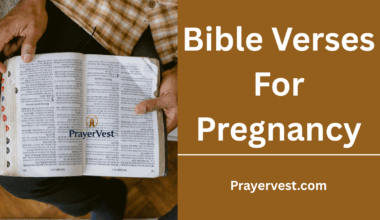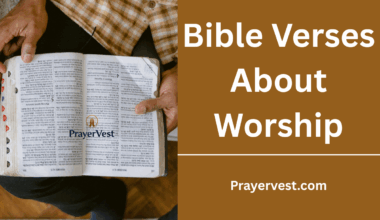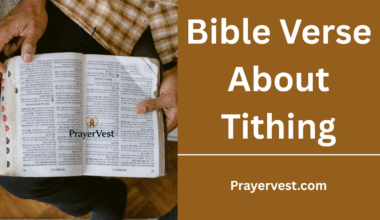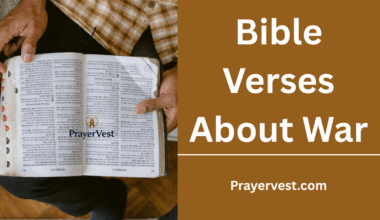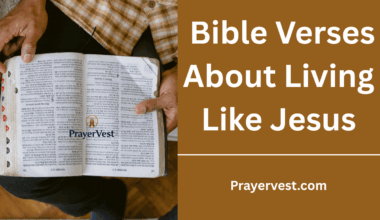Throughout the Bible, birds are used as representations of God’s supply, care, and freedom. Birds serve as a reminder of the Creator’s attention to even the smallest elements of His creation, from the sparrow that is impossible to miss to the eagle soaring on powerful wings. The Scriptures encourage believers to view the natural world as a reflection of divine wisdom and care by using these winged species to express concepts of faith, trust, and dependence on God.
Birds are used as metaphors for spiritual truths in numerous passages. For example, the eagle is a symbol of tenacity, strength, and rejuvenation, while the gentle dove is a symbol of peace, purity, and the presence of the Holy Spirit. Jesus Himself notes that even birds are nourished and cared for by the Father, which serves as another reminder of God’s provision. Through these illustrations, the Bible asks us to consider how God’s faithfulness nurtures and sustains us in every stage of life.


Believers are inspired to accept the teachings of faith, hope, and spiritual understanding by studying the Bible scriptures concerning birds. Every verse presents a different viewpoint, whether it is a reminder to pursue serenity and rejuvenation, a call to trust in God’s provision, or an exhortation to overcome obstacles. We receive profound spiritual counsel for navigating life with faith, courage, and reliance on the One who watches over all creation when we meditate on these verses, in addition to a greater respect for the natural world.
40 Inspiring Bible Verses About Birds (2025)
1. Genesis 1:20
“And God said, ‘Let the waters teem with living creatures, and let birds fly above the earth across the vault of the sky.’”
This foundational verse introduces birds as part of God’s intentional design in creation. Their presence in the sky signifies freedom, beauty, and divine creativity. Birds were not accidental beings but purposeful elements of God’s ordered world, symbolizing the Creator’s desire for life to flourish in every realm—land, water, and air. Their effortless flight mirrors the boundless reach of God’s imagination and His delight in filling creation with movement and wonder. When we observe birds today, we witness a living reminder of God’s sovereignty and artistry.
2. Genesis 8:7
“And he sent out a raven, and it kept flying back and forth until the water had dried up from the earth.”
The raven Noah released became a sign of transition between judgment and restoration. Its flight over the receding waters represents the slow but certain movement from devastation toward renewal. Ravens, often associated with wilderness and desolation, here function as messengers of change. This moment teaches that God sometimes uses unexpected creatures and unconventional means to reveal signs of progress. Even in seasons when the ground beneath us seems uncertain, God is quietly working, sending signals that renewal is on the horizon.
3. Genesis 8:12
“He waited seven more days and sent the dove out again, but this time it did not return to him.”
The dove in Noah’s narrative becomes a powerful symbol of peace, restoration, and new beginnings. Its failure to return signaled that the earth was becoming inhabitable again—a profound turning point after the flood. The dove represents God’s gentle assurance that ruin is never His final word. In our lives, the “dove moments” often appear subtly: a quiet breakthrough, a new opportunity, or a renewed sense of hope. Through this verse, we learn that God communicates restoration not through thunderous signs but through gentle indicators of fresh life.
4. Leviticus 14:4
“Then the priest shall order that two live clean birds… be brought for one who is to be cleansed.”
In Israel’s purification rituals, birds were used symbolically to signify cleansing and release. One was sacrificed, and the other was set free—representing life restored. This imagery reflects God’s desire to lift burdens, remove impurities, and grant freedom to the oppressed. Birds here serve as living metaphors of transformation and divine mercy. Their release into the open sky mirrors the spiritual liberation God offers His people, reminding us that true cleansing opens the soul to soar again.
5. Deuteronomy 22:6
“If you come across a bird’s nest… do not take the mother with the young.”
This command highlights God’s compassion for even the smallest creatures. By protecting nesting birds, God teaches His people empathy, restraint, and respect for life. The instruction reveals a divine ethic of care woven into creation—an ethic that extends beyond humans to animals and ecosystems. God’s concern for a mother bird guarding her nest reminds us that His compassion saturates every corner of creation. It invites us to mirror His tenderness in our interactions with the world around us.
6. Deuteronomy 32:11
“Like an eagle that stirs up its nest and hovers over its young, that spreads its wings to catch them and carries them aloft.”
In this poetic image, God is likened to a protective eagle who both nurtures and strengthens its young. Eagles disturb their nests not to harm their eaglets but to teach them to fly—to develop strength, resilience, and independence. Yet even while encouraging growth, the eagle hovers near, ready to catch its young should they fall. This verse reveals the paradox of God’s love: He both comforts and challenges, both supports and stretches us. His guidance may push us beyond our comfort zones, but His presence ensures we are never abandoned or left without refuge.
7. Job 12:7
“But ask the animals, and they will teach you, or the birds in the sky, and they will tell you.”
Job declares that creation itself is a teacher of divine wisdom. Birds, with their effortless flight and instinctual knowledge, testify to God’s intricate design and sustaining power. Their patterns, migrations, songs, and survival instincts all speak of a Creator who equips every creature with what it needs. This verse invites us to slow down, observe, and learn from the natural world. Birds become instructors, revealing truths about trust, provision, and the rhythm of life shaped by divine order.
8. Job 28:7
“No bird of prey knows that hidden path, no falcon’s eye has seen it.”
Here, Job highlights the limits of even the most keenly perceptive creatures. Falcons—renowned for their sharp vision—are used as metaphors for the inability of creation to uncover divine mysteries. This passage elevates God’s wisdom far above human understanding and even the most extraordinary abilities found in nature. It reminds us that while birds may soar high and see far, the depths of God’s purposes remain known only to Him. We are called to humility, acknowledging that divine insight surpasses all earthly perception.
9. Job 38:41
“Who provides food for the raven when its young cry out to God and wander about for lack of food?”
God challenges Job with a profound question about providence. Ravens—often depicted as unclean and undesirable in biblical times—are not overlooked by God. He hears their cries and sustains their young, demonstrating His tender care for even the creatures people tend to disregard. This verse illuminates God’s universal compassion. If He provides for ravens, how much more will He provide for His children? It reassures us that divine attention extends to the overlooked, the forgotten, and the seemingly insignificant.
10. Psalm 84:3
“Even the sparrow has found a home, and the swallow a nest for herself, where she may have her young— a place near your altar, Lord Almighty.”
This beautiful verse portrays birds finding sanctuary near God’s altar. Sparrows and swallows—ordinary, humble birds—are welcomed into the sacred spaces of God’s presence. Their nests near the altar symbolize God’s openness to all who seek Him, no matter how small or insignificant they may appear. This imagery reveals that the presence of God is a refuge not only for the mighty but also for the meek. In His courts, even the smallest find safety, belonging, and rest.
11. Psalm 91:4
“He will cover you with his feathers, and under his wings you will find refuge.”
God’s protection is illustrated through the gentle yet powerful image of a mother bird sheltering her young. Her wings become a symbol of divine security—warm, strong, and encompassing. This verse reassures believers that God’s covering is both protective and nurturing. When danger threatens or fear overwhelms, His wings form a sacred refuge. The metaphor invites us into a posture of trust, resting beneath His supernatural care.
12. Psalm 104:12
“The birds of the sky nest by the waters; they sing among the branches.”
The psalmist celebrates the harmony of God’s creation, describing birds thriving in their natural habitats. Their songs echo through the trees, expressing the joy of existence and the glory of the Creator. This verse reminds us that birds are part of the divine symphony of life, fulfilling their purpose simply by being what they are designed to be. Their presence teaches us gratitude, beauty, and the importance of finding our place within God’s wider creation.
13. Psalm 147:9
“He provides food for the cattle and for the young ravens when they call.”
Once again, God’s attention toward ravens reveals His compassion toward creatures often undervalued by society. He responds to their calls, meeting their needs with divine generosity. This verse emphasizes God’s role as the sustainer of all life—not just human life, but the entire ecosystem. It teaches us the interdependence of creation and the reliability of God’s care in every season.
14. Proverbs 27:8
“Like a bird that flees its nest is anyone who flees from home.”
This proverb uses the imagery of a bird leaving its nest prematurely to warn against instability and restlessness. A nest symbolizes safety, nurture, and growth. A bird that abandons it too early exposes itself to danger. In the same way, people who wander without purpose or who detach themselves from foundational relationships risk losing protection and direction. The verse calls for wisdom in knowing when to stay rooted and when to take flight.
15. Ecclesiastes 10:20
“Do not revile the king even in your thoughts… because a bird in the sky may carry your words.”
This proverb-like warning highlights the ever-present possibility that hidden words may become known. The “bird in the sky” symbolizes the unpredictability of gossip or exposed secrets. Birds here represent swiftness—how quickly a careless word can travel. This verse encourages discretion, humility, and integrity, reminding us that nothing spoken in secret is beyond the reach of exposure.
16. Isaiah 31:5
“Like birds hovering overhead, the Lord Almighty will shield Jerusalem.”
God’s protection over Jerusalem is compared to a flock of birds hovering overhead—alert, watchful, and ready to defend. This metaphor depicts a collective, constant, and compassionate form of divine guardianship. The imagery conveys movement, vigilance, and closeness. It assures us that God does not guard from afar but from above and around, surrounding His people with steadfast protection.
17. Isaiah 40:31
“They will soar on wings like eagles; they will run and not grow weary, they will walk and not be faint.”
The eagle becomes a symbol of spiritual renewal and divine empowerment. To soar like an eagle is to rise above limitations, lifted by God’s strength rather than human effort. This verse promises supernatural stamina, endurance, and elevation for those who hope in the Lord. It speaks to seasons of exhaustion, reminding believers that God renews weary hearts and breathes strength into fainting spirits.
18. Jeremiah 8:7
“Even the stork in the sky knows her appointed seasons… but my people do not know the requirements of the Lord.”
Jeremiah uses birds—specifically migratory birds like storks—to highlight the contrast between instinctive obedience in nature and the spiritual disobedience of God’s people. Birds know their seasons and follow divine rhythms built within them. Yet humans, created with higher reasoning, often ignore God’s guidance. This verse challenges us to return to alignment with God’s timing, voice, and direction.
19. Ezekiel 17:23
“On the mountain heights of Israel I will plant it… Birds of every kind will nest in it; they will find shelter in the shade of its branches.”
This prophetic image portrays God planting a majestic tree that becomes a refuge for birds of all kinds. The tree symbolizes God’s kingdom—strong, expansive, and inclusive. Birds nesting in its branches represent nations and people finding rest under God’s reign. The verse paints a picture of divine hospitality, where all creation finds shelter in the shade of God’s sovereign presence.
20. Daniel 4:21
“Its leaves were beautiful, its fruit abundant… Under it the wild animals found shelter, and the birds lived in its branches.”
Nebuchadnezzar’s dream describes a great tree providing shelter and sustenance for animals and birds. The birds signify nations, peoples, and communities that benefited from the king’s rule. Yet the dream ultimately warns of pride and the fragility of human kingdoms. Birds resting in the branches illustrate how leadership influences many lives. This passage reminds us that positions of power carry responsibility and that God alone is the ultimate source of security and provision.
21. Matthew 3:16
“As soon as Jesus was baptized… he saw the Spirit of God descending like a dove and alighting on him.”
The descent of the Holy Spirit in the form of a dove reveals a profound symbol of purity, peace, and divine affirmation. The dove, long associated with hope and renewal since the days of Noah, now becomes a sign of God’s pleasure in His Son and the inauguration of Jesus’ earthly ministry. This moment marks the union of heaven and earth, where God openly displays His approval. The dove reminds us that the presence of the Holy Spirit is gentle yet powerful, descending upon those who walk in obedience and humility.
22. Matthew 6:26
“Look at the birds of the air; they do not sow or reap or store away in barns, and yet your heavenly Father feeds them.”
Jesus uses birds as living illustrations of God’s faithfulness. They neither engage in agricultural labor nor build storehouses, yet they are sustained daily by the Creator. Their carefree existence becomes a rebuke to human anxiety. Birds trust the natural rhythms God designed and live unburdened by fear of tomorrow. This verse calls believers to adopt the same posture of trust, knowing that God’s provision is not dependent on our striving but on His unwavering care.
23. Matthew 10:16
“Be as shrewd as snakes and as innocent as doves.”
Jesus employs the dove as a symbol of innocence and purity. Believers are called to combine wisdom with innocence—being discerning without becoming corrupt, and gentle without being naïve. The dove represents a heart untainted by malice, even in a hostile world. This verse provides a balanced blueprint for Christian character: to navigate life’s challenges with strategic wisdom while maintaining moral purity.
24. Matthew 10:29
“Are not two sparrows sold for a penny? Yet not one of them will fall to the ground outside your Father’s care.”
Sparrows, inexpensive and common, symbolize creatures considered insignificant by society. Yet Jesus declares that God is intimately aware of every sparrow’s life. Not a single one falls without His knowledge. This truth reveals God’s sovereignty and attentiveness. If He cares for sparrows, how much more does He watch over His children? This verse becomes an anchor for those struggling with feelings of invisibility or insignificance.
25. Matthew 10:31
“So don’t be afraid; you are worth more than many sparrows.”
After emphasizing God’s care for sparrows, Jesus elevates the dignity of human life. Believers are exceedingly precious in God’s eyes—far more valuable than the birds He sustains with such meticulous care. This verse directly addresses fear, assuring us that divine protection and love surround us daily. Understanding our worth in God’s eyes brings deep inner security and confidence.
26. Mark 1:10
“Just as Jesus was coming up out of the water, he saw heaven being torn open and the Spirit descending on him like a dove.”
Mark emphasizes the dramatic moment when heaven is “torn open,” symbolizing a new era of divine revelation. The dove signifies the gentleness of the Spirit’s coming, highlighting that God’s power is not always loud or forceful. The heavenly descent of the dove marks Jesus as the chosen Messiah and ushers in His ministry. It reminds believers that God’s anointing comes through His Spirit, who descends in peace yet empowers with divine strength.
27. Luke 12:24
“Consider the ravens: They do not sow or reap… yet God feeds them. And how much more valuable you are than birds!”
Luke reiterates the theme of divine provision through the example of ravens—birds considered unclean and undesirable. Yet God sustains them without fail. Jesus uses ravens to demonstrate that God’s care is not based on worthiness but on His character. If even ravens receive His attention, human beings—crafted in His image—can rest assured of His faithful provision.
28. Luke 13:19
“It is like a mustard seed… it grew and became a tree, and the birds perched in its branches.”
Jesus describes the kingdom of God using the imagery of birds finding refuge in the branches of a great tree. The mustard seed, though small, grows into something expansive and sheltering. Birds nesting in its branches symbolize the nations finding rest in the kingdom’s shade. This parable teaches that God’s kingdom begins small but grows beyond human expectation, becoming a place of welcome, refuge, and safety for all people.
29. Luke 17:37
“Where there is a dead body, there the vultures will gather.”
Jesus uses vultures to illustrate the inevitability of judgment. Just as vultures instinctively locate what is dead, so the signs of the end times will be unmistakable. Birds here symbolize discernible indicators—visible and unavoidable. This verse serves as a reminder that spiritual realities cannot be hidden indefinitely. Just as vultures are drawn with certainty to what is lifeless, divine judgment will arrive with clarity and purpose.
30. John 1:32
“Then John gave this testimony: ‘I saw the Spirit come down from heaven as a dove and remain on him.’”
John the Baptist testifies that the Holy Spirit did not simply descend upon Jesus but *remained* on Him. The dove here represents permanence, peace, and divine approval. This moment reveals Jesus’ identity as the anointed One who carries the presence of God without measure. It also foreshadows the Spirit’s abiding presence in believers after Christ’s ascension. The dove’s resting on Jesus assures us that the Spirit’s work brings stability and continuity, not momentary flashes of inspiration.
31. Acts 10:12
“It contained all kinds of four-footed animals, as well as reptiles and birds.”
Peter’s vision of various animals—including birds—symbolizes the breaking down of barriers between Jews and Gentiles. The birds in the vision represent diversity within creation and, by extension, the inclusivity of the gospel. God reveals that His salvation is not limited to one group but offered to all humanity. This passage highlights the breadth of God’s mercy and the expansive reach of His redemptive plan.
32. Romans 1:20
“For since the creation of the world God’s invisible qualities… have been clearly seen, being understood from what has been made.”
While not exclusively about birds, this verse includes them as part of creation’s testimony to God’s power and divine nature. Birds—with their intricate wing structures, migratory patterns, songs, and unique behaviors—serve as living evidence of God’s wisdom. Creation speaks, and birds contribute to this silent proclamation. This verse invites us to consider how the natural world, including the avian world, reveals truths about the Creator.
33. 1 Corinthians 15:39
“All flesh is not the same… birds have another.”
Paul uses the diversity of bodies—including those of birds—to teach about the resurrection. Birds possess a unique type of flesh suited for flight, highlighting God’s intentionality in design. This comparison helps believers understand that resurrected bodies will differ from earthly ones—each crafted for a specific purpose. Birds illustrate the creative uniqueness God applies to all forms of life, including the glorified bodies believers will one day receive.
34. James 3:7
“All kinds of animals, birds, reptiles and sea creatures are being tamed and have been tamed by mankind.”
James points to humanity’s ability to tame creatures, including birds, to underscore the challenge of taming the tongue. Birds represent the wider creation over which humans exercise dominion. Yet even with the capacity to train other species, people struggle to control their own speech. This contrast emphasizes the need for divine help in mastering our words and cultivating God-honoring communication.
35. Revelation 18:2
“Fallen! Fallen is Babylon the Great!… She has become a dwelling for demons and a haunt for every unclean bird.”
Unclean birds symbolize corruption, decay, and spiritual impurity in this apocalyptic declaration. Their presence depicts the moral collapse of Babylon—a representation of worldly rebellion. Birds here serve as vivid metaphors for demonic activity and spiritual desolation. This verse warns believers of the ultimate fate of systems opposed to God and highlights the stark contrast between holiness and corruption.
36. Revelation 19:17
“An angel… called in a loud voice to all the birds flying in midair, ‘Come, gather together for the great supper of God.’”
In this dramatic vision, birds are summoned as instruments of divine judgment. Their gathering signifies the finality and completeness of God’s justice. This imagery is sobering, reminding us that God will ultimately confront evil and bring about righteous judgment. Birds become participants in the unfolding divine plan, emphasizing the magnitude and seriousness of the end-time events.
37. Hosea 11:11
“They will come trembling like birds from Egypt, like doves from Assyria.”
Hosea uses the imagery of frightened but returning birds to describe Israel’s restoration. Birds fluttering home symbolize repentance, longing, and the hope of reconciliation. Despite their trembling, they move toward the safety of God’s embrace. This verse reveals God’s readiness to welcome His people back, no matter how far they have wandered. The imagery encourages those who feel distant from God to return, knowing His mercy awaits them.
38. Zephaniah 2:14
“Flocks and herds will lie down there… Owls will hoot in the windows.”
Owls and other birds inhabiting desolate places symbolize judgment on proud nations. Their haunting presence reflects the aftermath of rebellion and the silence that follows divine justice. Birds here become signs of destruction, reminding us that God’s warnings are real and His judgments sure. This verse urges humility and obedience, pointing to the consequences of unrepentant pride.
39. Jeremiah 5:27
“Like cages full of birds, their houses are full of deceit.”
Jeremiah compares the people’s deceitful practices to a cage crammed with trapped birds—restless, noisy, and desperate. The imagery illustrates moral entanglement and spiritual captivity. Birds, created to fly freely, become symbols of souls trapped in sin. This verse warns of the bondage that comes from corruption and calls for liberation through repentance and righteousness.
40. Psalm 55:6
“Oh, that I had the wings of a dove! I would fly away and be at rest.”
David expresses a longing for escape and peace using the gentle imagery of a dove in flight. The dove represents serenity, purity, and freedom from turmoil. This heartfelt cry reflects the desire of every troubled soul—to rise above stress, conflict, and hardship. The verse resonates deeply with anyone seeking refuge, reminding us that true rest is found not in running away but in God’s presence, where the soul finds peace.
Conclusion
These biblical passages regarding birds serve as a reminder that God’s concern for His creation goes well beyond what is visible to the naked eye. Birds teach us to have a strong sense of trust, to rely on God’s provision, and to overcome life’s challenges with renewed vigor. Every bird bears a message of trust that directs us back to God’s heart, whether it is the dove’s serene emblem, the eagle’s soaring power, or the sparrow’s gentle certainty. Scripture’s mention of them encourages us to pause, take in God’s creation, and keep in mind that we are even more precious than the animals He so tenderly cares for.
In the end, these passages encourage us to have faith in God’s unwavering watchfulness. He is still dedicated to leading, guarding, and providing for us, just as He feeds and protects the birds of the air throughout the year. Our faith is bolstered, our anxieties start to fade, and our hearts become rooted in the knowledge of God’s unwavering love when we reflect on these facts. I pray that the symbolism of birds would encourage you to walk every day with the One who never misses even the slightest detail of your life, soar higher in faith, and rest deeper in God’s promises.

